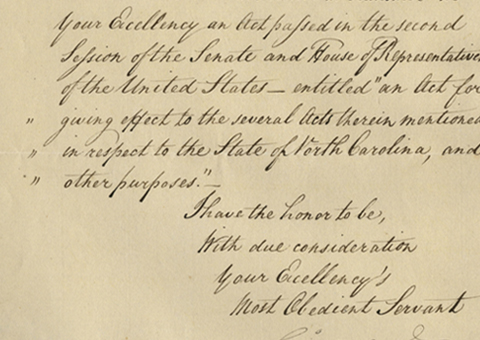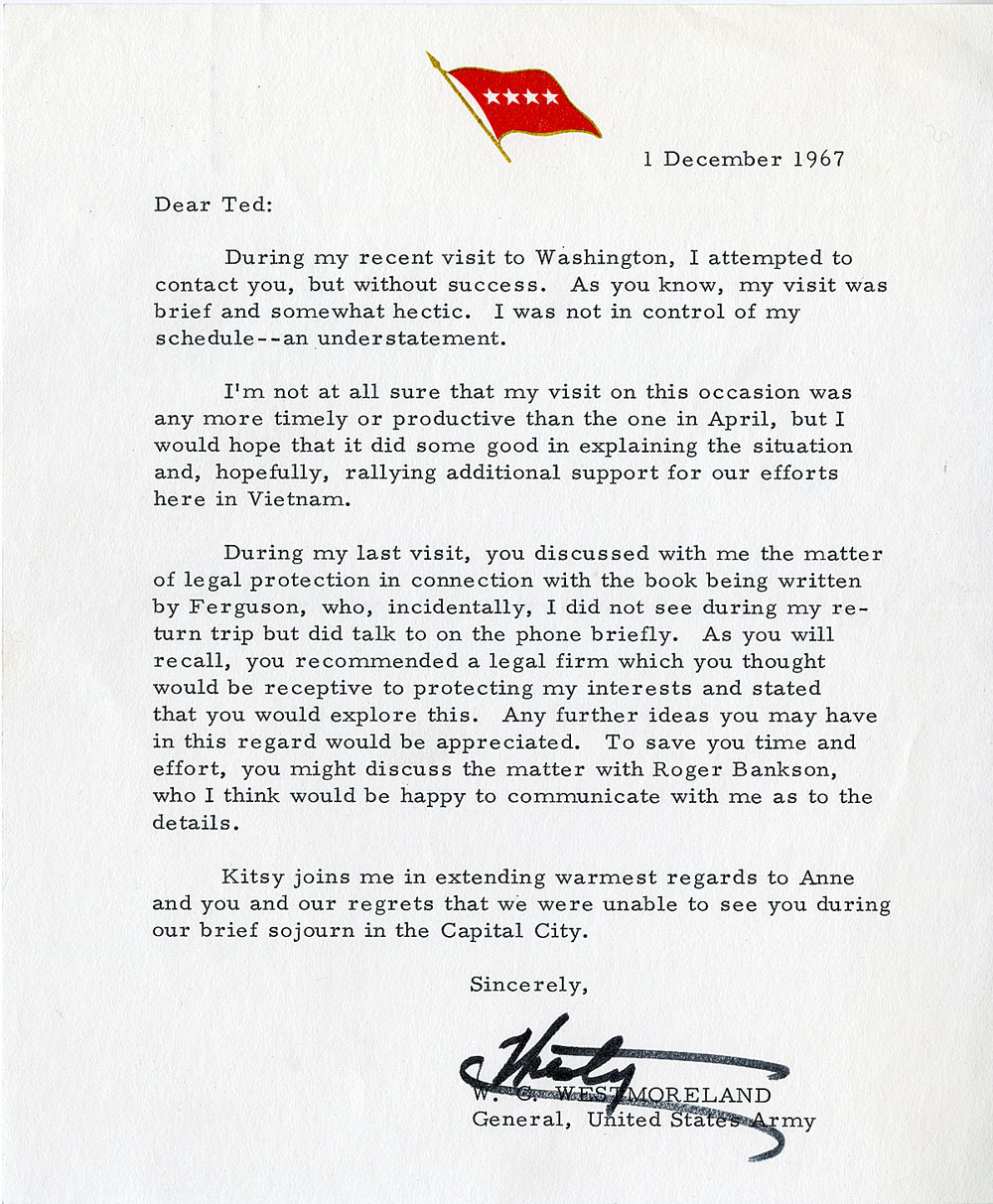Gen. William Westmoreland Seeks to Rally Support For His Vietnam Policy, Just Months Before the Tet Offensive


Westmoreland was commander of all U.S. forces in Vietnam. Starting with 16,000 men in 1964, he oversaw the escalation of the conflict and had 535,000 troops under his control when he departed in 1968, after the Tet offensive in February made his claims of progress in Vietnam, of seeing the “light...
Westmoreland was commander of all U.S. forces in Vietnam. Starting with 16,000 men in 1964, he oversaw the escalation of the conflict and had 535,000 troops under his control when he departed in 1968, after the Tet offensive in February made his claims of progress in Vietnam, of seeing the “light at the end of the tunnel,” hard to maintain. Given a virtually free hand by President Johnson in deciding how to conduct the war within South Vietnam, he chose to pursue a war of attrition, in which the measure of success would be body count, the number of enemy killed. His premise was that if he killed enough of their soldiers, the enemy would lose heart and cease its aggression against South Vietnam. He went about this primarily through the use of search and destroy tactics, and large-scale use of artillery, air power, and large-unit battles. Westmoreland started out with the support of Congress, most of the American people, and even the media, in the end he had lost much of that.
In 1967, Ernest B. Ferguson was writing his biography of Westmoreland, which would be published in 1968 as “Westmoreland: The Inevitable General.” This would be the earliest full-length biography of Westmoreland, and the General was very concerned about his reputation and what Ferguson would say. As we see here, he was even thinking of hiring an attorney to take action against Ferguson if he thought it warranted.
Typed Letter Signed, on his 4-star letterhead, Saigon, South Vietnam, 1 December 1967, to Gen. Chester “Ted” Clifton, former Military Aide to Presidents Kennedy and Johnson, and Westmoreland’s friend from their West Point days, seeking to rally support for his Vietnam policy. “During my visit to Washington, I attempted to contact you, but without success. As you know, my visit was brief and somewhat hectic. I was not in control of my schedule – an understatement. I'm not at all sure that my visit on this location was anymore timely or productive than the one in April, but I would hope that it did some good in explaining the situation and, hopefully, rallying additional support for our efforts here in Vietnam. During my last visit you discussed with me the matter of legal protection in connection with the book being written by Ferguson, who, incidentally, I did not see during my return trip but did talk to on the phone briefly. As you will recall, you recommended a legal firm that you thought would be receptive to protecting my interests and stated that you would explore this. Any further ideas you may have in this regard would be appreciated. To save you time and effort, you might discuss the matter with Roger Blankson, who I think would be happy to communicate with me as to the details.”
With the situation on the ground in Vietnam deteriorating, and just months before Tet, Westmoreland never achieved his goal of rallying support. And as for Ferguson, his book turned out to be a highly favorable one.

Frame, Display, Preserve
Each frame is custom constructed, using only proper museum archival materials. This includes:The finest frames, tailored to match the document you have chosen. These can period style, antiqued, gilded, wood, etc. Fabric mats, including silk and satin, as well as museum mat board with hand painted bevels. Attachment of the document to the matting to ensure its protection. This "hinging" is done according to archival standards. Protective "glass," or Tru Vue Optium Acrylic glazing, which is shatter resistant, 99% UV protective, and anti-reflective. You benefit from our decades of experience in designing and creating beautiful, compelling, and protective framed historical documents.
Learn more about our Framing Services








































































































